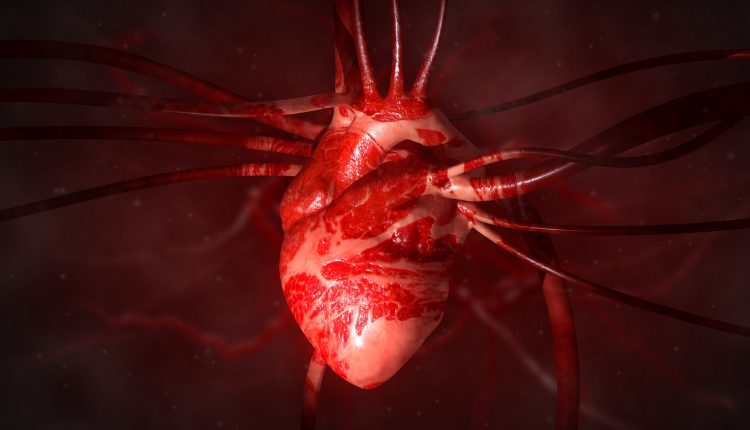
Arrhythmogenic cardiomyopathy: what it is and what it entails
Arrhythmogenic cardiomyopathy is a hereditary heart disease that is difficult to recognise, but can be diagnosed as part of a family screening
Arrhythmogenic cardiomyopathy (or dysplasia) is a rare disease of the heart muscle
The cells of the heart muscle are held together by numerous proteins.
In people with arrhythmogenic cardiomyopathy, these proteins do not develop properly and are unable to help the heart cells bind together and stay together.
The heart cells then fall apart and the spaces left empty are filled with fatty and fibrous deposits in an attempt to repair the damage.
This condition is generally progressive, meaning that it worsens over time.
It is generally hereditary, i.e. it is passed on within families, and is caused by the presence of errors, called mutations, in one or more genes in our DNA.
The genetic basis can be identified in about half of all affected patients.
Children with arrhythmogenic cardiomyopathy may experience one or more of the following symptoms:
- Palpitations;
- Sudden, transient loss of consciousness (syncope/presyncope);
- Respiratory difficulty or sensation of shortness of breath and shortness of air;
- Heart rhythm abnormalities;
- Swelling of the ankles and legs;
- Specific skin changes: woolly hair, dystrophy of the nails, skin changes.
Arrhythmogenic cardiomyopathy can be very difficult to diagnose, particularly in the early stages, because the symptoms are non-specific and are very similar to those of other diseases, making diagnosis even more difficult.
The disease often progresses in an irregular, spotty manner.
Diagnosis can also be made as part of a family screening, in relatives of people already diagnosed with the condition.
For all these factors, specific criteria for the diagnosis of arrhythmogenic cardiomyopathy have been established in the literature
These criteria are divided into major and minor criteria based on the findings of the clinical history, specific symptoms and signs and the results of instrumental examinations.
The most commonly used instrumental tests to make the diagnosis are the electrocardiogram (ECG), which records the heart’s electrical activity, and the echocardiogram, which shows the structure and function of the heart.
Only recently has cardiac Magnetic Resonance Imaging (MRI) assumed a key role in the diagnosis of certainty of disease.
Additional tests that can be done to complete the diagnosis are:
- Recording of the heart rhythm for 24 hours (Holter ECG);
- Exercise testing;
- Genetic analysis.
The objectives of treatment are basically threefold:
- Identify patients at high risk of sudden death;
- Prevent/control arrhythmias, which are abnormal rhythms of the heart;
- Improve the pumping function of the heart.
Arrhythmogenic cardiomyopathy is not a curable condition, but many symptoms caused by this condition can be controlled with medication.
Medications, however, do not prevent arrhythmias with a catastrophic outcome.
There are also other types of treatment such as electrical cardioversion or catheter ablation.
The implantation of a defibrillator, a device capable of interrupting life-threatening abnormal heart rhythms, is a valid option in some cases to prevent dangerous arrhythmias.
Treatment can remain the same for a long time or vary frequently.
This varies from person to person and depends on the type of manifestation, symptoms and response to treatment.
As a genetically determined disease, there are, unfortunately, no methods of prevention.
Cardiac screening with electrocardiogram and echocardiogram is always recommended in all first-degree relatives of the affected person, even in the absence of signs or symptoms of the disease.
Screening should be repeated every 2-3 years in all first-degree relatives.
This screening may in some cases include second-level instrumental examinations such as 24-hour Holter ECG (dynamic electrocardiogram according to Holter), stress test and cardiac MRI.
In first-degree relatives, in-depth genetic testing can reveal the responsible gene mutation, even before its clinical manifestation.
Many studies have shown that in the early stage of the disease, with appropriate treatment and the right controls over time, some of the symptoms are controlled and affected children can lead fairly normal lives.
Read Also:
Emergency Live Even More…Live: Download The New Free App Of Your Newspaper For IOS And Android
Pathologies Of The Left Ventricle: Dilated Cardiomyopathy
Cardiomegaly: Symptoms, Congenital, Treatment, Diagnosis By X-Ray
Heart Disease: What Is Cardiomyopathy?
Inflammations Of The Heart: Myocarditis, Infective Endocarditis And Pericarditis
Heart Murmurs: What It Is And When To Be Concerned
Broken Heart Syndrome Is On The Rise: We Know Takotsubo Cardiomyopathy
What Is A Cardioverter? Implantable Defibrillator Overview
‘D’ For Deads, ‘C’ For Cardioversion! – Defibrillation And Fibrillation In Paediatric Patients
Inflammations Of The Heart: What Are The Causes Of Pericarditis?
Do You Have Episodes Of Sudden Tachycardia? You May Suffer From Wolff-Parkinson-White Syndrome (WPW)
Knowing Thrombosis To Intervene On The Blood Clot
Patient Procedures: What Is External Electrical Cardioversion?
Increasing The Workforce Of EMS, Training Laypeople In Using AED
Difference Between Spontaneous, Electrical And Pharmacological Cardioversion
What Is Takotsubo Cardiomyopathy (Broken Heart Syndrome)?
Alcoholic And Arrhythmogenic Right Ventricular Cardiomyopathy



